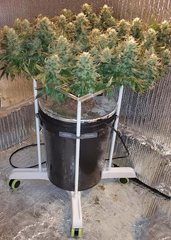ScrOG blOG™ — screen of green
Why Single Plant ScrOG?
Single plant ScrOGs (Screen of Green) make most sense as apposed to 2 or more plants under a large net. Here are 10 excellent and compelling reasons why.

The Best Supporting Method
And The Best Supporting Method Goes To…
Screen of Green, For Its Starring Role In Marijuana Gardens Everywhere!
In our first article in this series, we outlined the screen of green technique and its pros and cons.
To recap, screen of green, or SCROG, was created by growers working with limited ground space and/or vertical height in their garden area. It’s useful for small spaces, and in situations when a grower can only grow a few plants.
SCROG growers train their plants’ branches to grow into and along a horizontal support screen that’s suspended above the plants.
Training the plants, known as low stress training, or LST, creates plants with multiple main branches that yield more bud weight. This form of marijuana growing is especially useful for maximizing yield per harvest.
The key component of a SCROG garden is the screen itself, which consists of a flat support structure to allow for horizontal mounting of screen material such as netting or string.
Two main types of screening apparatus have been popularized for SCROG cannabis cultivation. One type is fixed in place and mounted over a cannabis gardening system that might be a grow table, ebb and flow table, or deep water culture bucket system.
Multiple plants grow under the screen; their branches are woven or otherwise fastened to the horizontal screen.
Meet Scrogger, Innovators From The Lone Star State
Instead of that approach, we recommend the second style of SCROG cultivating, which involves having an individual plant in its own grow container served by its own apparatus.
This kind of growing is facilitated by the P SCROG system made by Scrogger, a company headquartered near Austin, Texas.
Scrogger specializes in SCROG gardening and has created state-of-the-art, multilayered, adjustable screen kits to fit almost any SCROG garden size or style.
P SCROG by Scrogger features a height-adjustable apparatus, several screen options, and a base that can support up to 250 pounds of weight. Said base is mounted on casters so the entire system and the plant within it can be rotated in a complete circle, and can be easily moved to another part of the grow operation.
This mobility and ease of access erases the disadvantages of SCROG gardens that have several plants growing under and sharing a large fixed screen, including difficulty with watering, trimming, even accessing the lowest parts of the plants in the middle of the arrangement.
Margo Mermelstein co-founded Scrogger in 2015 along with her husband Gary. The family-run business owns the patent for its revolutionary gadget that now sells nationally, as well as in Australia and Canada.
Margo explains, “Our unique selling point is the screens. They are, if you will, our secret sauce, because they are clear, flexible, reusable — and that’s what people like. Whether growers are using our portable units or the 2×4 or 4×4 [units], which are not portable, we’re finding the commonality that runs through all of it is our unique screen.”
Scrogger screens are made from polycarbonate, with an impressive flex strength of 13,500 PSI. You can almost bend this material in half and it won’t break.
They’re built to resist degradation factors common in indoor marijuana gardens such as water, nutrients, ultraviolet light and heat. They’re nonporous, washable and food-grade, meaning the polycarbonate doesn’t contain any dyes or recycled plastic that’s harmful to humans. In addition, the food-grade designation means no other harmful chemicals were used in either the resin or in production of the plastic container.
This is in contrast to materials commonly used as screens, supports and trellising in SCROG gardens. Growers often resort to DIY methods for constructing SCROG apparatus. Some SCROG growers use metal wire, string, cheap plastics, wood, PVC pipe and conduit for their plant supports. These materials cause a variety of problems including off-gassing, unstable supports, sagging, disease vectors, and transfer of harmful toxins into the plants.
Scrogger systems eliminate those issues. They’re elegantly engineered plug-and-play tools created specifically for serious growers, and can be customized to fit your budget and your needs.
Such patented systems allow maximum versatility as growers train their plants, because the gadgets can be precisely height adjusted as plants grow, and the systems also allow for stacking secondary screens above the primary training screen that sits closest to the root zone.
Check out the below YouTube video to see how to assemble a Scrogger system.
“[The screen is] great for people who have smaller number of plants, 12 or less, so they can turn them around, trim them — do all kinds of things, including adjust the screen’s height as the plant grows,” Margo continues.
“People who get up into 50 plants or more are looking to use our screens by themselves in higher configuration. It really depends on the individual and what they’re doing for their grow.
“Plus it’s great for people who are handicapped, because it gives them more flexibility.”
When you have a SCROG unit encasing each plant individually, the grower is afforded full access and is likely to enjoy superior gardening outcomes.
We recommend Scrogger because the engineering and materials are top-rank, and because the company’s customer service is excellent, as is it unusually comprehensive product warranties.
Especially for marijuana growers who haven’t cultivated crops with SCROG before, the Scrogger systems are much easier to assemble and use than other pre-fabricated or DIY plant support systems. These systems give you the ability to more easily and quickly maximize the benefits of this style of marijuana growing.
In our next articles about SCROG, we’ll take a deep dive into LST, as well as customized grow lighting, root zone and feeding techniques.

P SCROG Kits
or
SupportOurPlants@SCROGGER.com
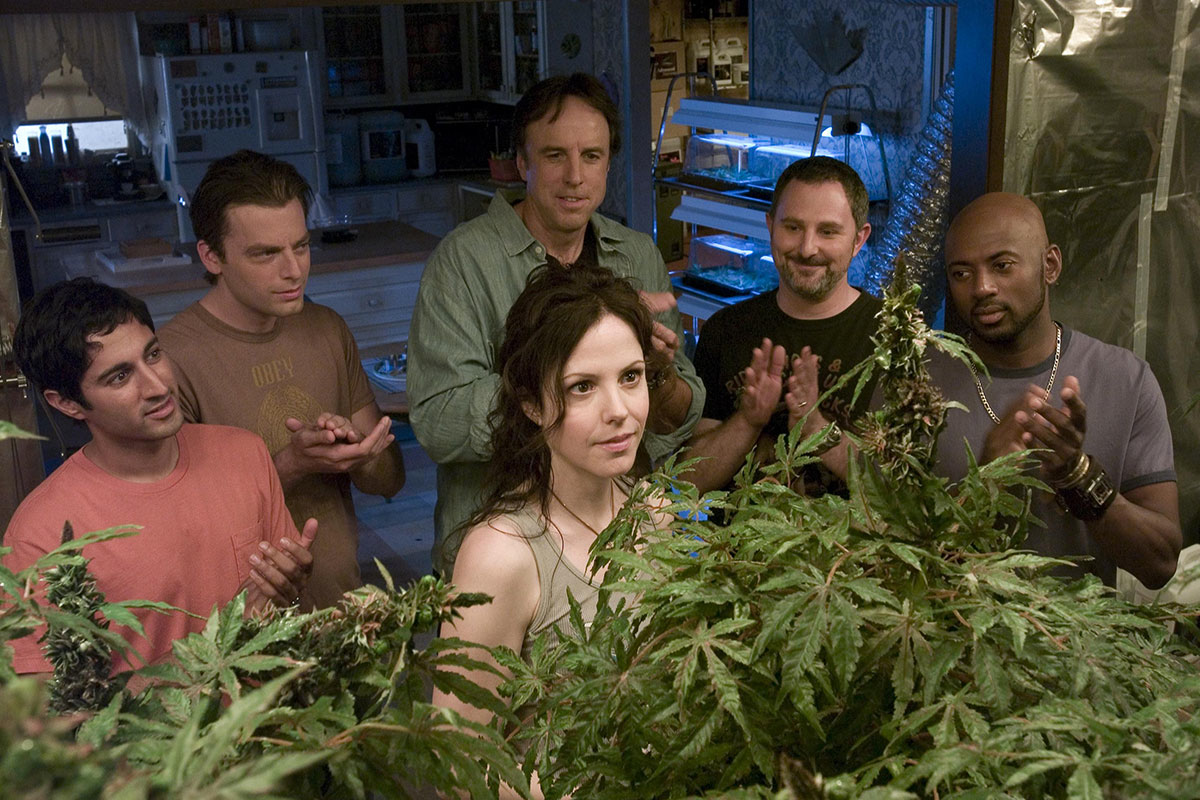
"Grow Your Own" state cannabis laws
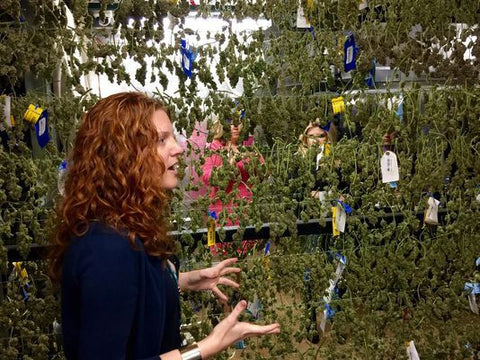
Alaska
Grow Limits: An adult over the age of 21 may possess, grow, process, or transport no more than six (6) plants total, with no more than three (3) plants that are mature.
Arizona
Grow Limits: A medical marijuana patient or the qualifying patient’s designated caregiver may cultivate up to twelve (12) plants if they live more than 25 miles from the nearest medical marijuana dispensary.
Grow Limits: Adults over the age of 21 may cultivate up to six (6) plants per residency. Medical marijuana patients and their primary caregivers may cultivate up to six (6) mature cannabis plants, or up to twelve (12) immature cannabis plants. With the recommendation of a physician, medical marijuana patients may be permitted to grow a greater amount per the patient’s needs.
Colorado
Grow Limits: Any adult resident of Colorado may grow up to six (6) plants per person, with no more than three (3) plants in the mature/flowering stage at any time. Non-Colorado residents may not cultivate cannabis. No more than twelve (12) total plants are allowed per residence regardless of the number of adults living there. Cannabis plants must be kept in an enclosed, locked area out of view. Homegrown cannabis may not be sold to others.
District of Columbia
Hawaii
Grow Limits: A registered medical marijuana program participant that indicates their intent to grow on their application may grow an “adequate supply,” or no more than seven (7) plants total and no more than 4 oz. of usable marijuana jointly between a registered patient and caregiver. A qualifying patient may designate a caregiver on their application to grow no more than seven (7) plants total on their behalf. A caregiver may only grow for one patient at a time. Whosoever is designated to grow medical marijuana should tag each plant at the base with their 329 card number and expiration date. Act 241 eliminates the ability of a caregiver to grow medical marijuana on behalf of a qualifying patient after December 31, 2018 (unless the patient is a minor or adult lacking legal capacity or resides on an island without a dispensary).
Maine
Grow Limits: A maximum of six (6) mature plants per Maine resident may be cultivated for personal use. Anyone who elects to cultivate marijuana plants must keep the plants in an enclosed, locked facility unless the plants are being transported. Minors, incapacitated adults, homeless qualifying patients, and registered patients in hospice or nursing facilities may not cultivate his or her own marijuana. Only designated primary caregivers or designated dispensaries may cultivate on behalf of a qualifying patient in this case.
Grow Limits: Adults over the age of 21 may cultivate up to six (6) mature plants per person for personal use, and plants must not be visible to the general public. A qualifying medical marijuana patient with a hardship cultivation registration may cultivate a limited number of plants sufficient to maintain a 60-day supply solely for that patient’s use. He or she may apply for a hardship cultivation registration if the patient can demonstrate that his or her access to a registered medical dispensary (RMD) is limited by:
- Verified financial hardship
- Physical incapacity to access reasonable transportation (an inability to use public transportation or drive oneself), lack of personal caregiver with reliable transportation, or lack of RMD that will deliver to the patient’s or personal caregiver’s primary address
- Lack of a RMD within a reasonable distance of the patient’s residence and lack of a RMD that will deliver marijuana to the patient’s or personal caregiver’s primary address
- A nonrefundable registration fee (unless waived due to financial hardship)
- Information supporting a claim that access is limited to one or more of the above circumstances
- An explanation including lack of feasible alternatives to mitigate limitations claimed
- A description and address of the single location that shall be used for the cultivation of marijuana, which shall either be the registered qualifying patient’s or personal caregiver’s primary residence
- A written explanation of how the qualifying patient will cultivate marijuana
- A description of the device or system that will be used to ensure security and prevent diversion of the marijuana plants being cultivated
- Written acknowledgement of the limitations on his or her authorization to cultivate, possess, and use marijuana for medical purposes
Michigan
Grow Limits: A primary caregiver who has been issued and possesses a registry identification card shall not be subject to arrest, prosecution, or penalty if the primary caregiver possesses an amount of marijuana that does not exceed 2.5 ounces of usable marijuana, or twelve (12) plants kept in an enclosed, locked facility for each registered qualifying patient that has specified that the primary caregiver be allowed under state law to cultivate marijuana for the qualifying patient.
Grow Limits: A registered cardholder may possess up to four (4) mature plants, twelve (12) seedlings, and one (1) ounce of usable marijuana. A provider or marijuana-infused product provider may possess four (4) mature plants, twelve (12) seedlings, and one (1) ounce of usable marijuana for each registered cardholder who has named the person as the registered cardholder’s provider.
Nevada
Possession/Use and Grow Limits: The holder of a valid registry identification card is prohibited from cultivating, growing, or producing marijuana if a dispensary opens in their county of residence. If the holder of a valid registry identification card resides in a county with no dispensaries, the holder of the card is exempt from state prosecution for:
- Possessing, delivering, or producing no more than 2 ½ ounces of usable marijuana
- Twelve (12) marijuana plants, irrespective of whether the plants are mature or immature
New Mexico
North Dakota
Oregon
Rhode Island
Possession/Use and Grow Limits: A patient cardholder who has in his or her possession a registry identification card shall not be subject to arrest, prosecution, or penalty for the medical use of marijuana, provided that the patient cardholder possesses an amount of marijuana that does not exceed twelve (12) mature marijuana plants and two and one-half (2.5) ounces of usable marijuana. Said plants shall be stored in an indoor facility.
Vermont
Washington
Grow Limits: The qualifying patient may also grow, in his or her domicile, up to six (6) plants for the personal medical use of the qualifying patient and possess up to eight (8) ounces of usable marijuana produced from his or her plants.

P SCROG Kits
or
SupportOurPlants@SCROGGER.com
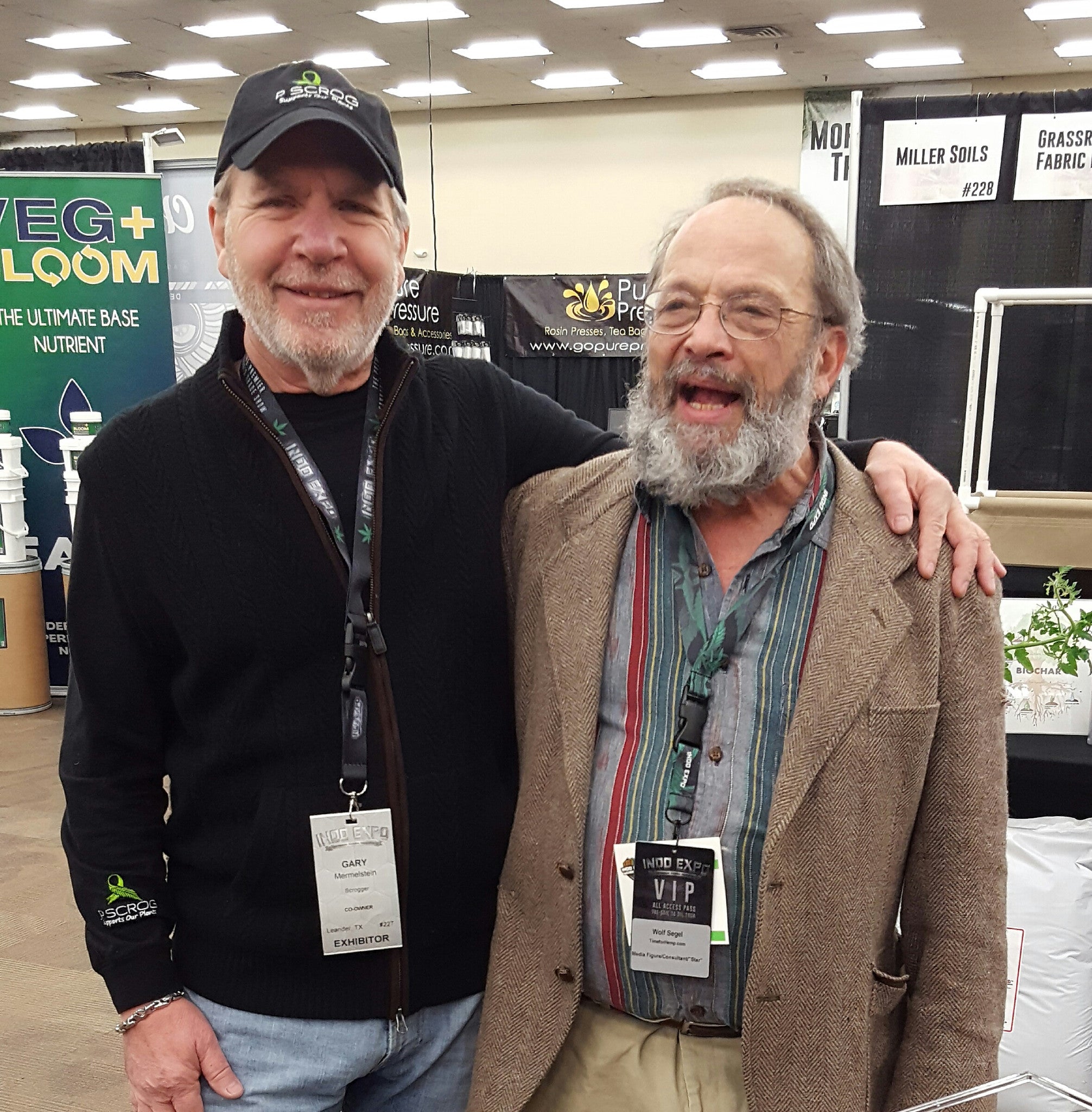
He thought of ScrOG in jail
On October 26, 1989, the DEA in conjunction with dozens of other law enforcement agencies raided hydroponics stores in 46 states, arresting 119 people, seizing several indoor gardening shops and thousands of cannabis plants. The largest single seizure belonged to Wolf Segal (Farmer in the Sky), 12,000 + plants growing as "Sea of Green" (SOG). Operation Green Merchant became known by the early cannabis pioneers as "Black Thursday" as many people swept up were hauled off to serve time in jail.
The Sea of Green method and cloning cannabis plants were techniques learned and brought to the US from Holland in the 80s. SOG is used to create "perpetual harvests". The method involves high plant counts per cu ft/m and short grow cycles. Clones are introduced to 12/12 flowering with little to no veg cycle. Many growers cannot use SOG due to local plant count limitations.
It was the high plant count associated with SOG that got Wolf "top grow bust" recognition. And while serving time in jail, he came up with the concept of Screen of Green (ScrOG). The concept was to grow short bushy plants with longer veg cycles that were 2x3 times more productive than traditional growing methods. This method would allow Segal to have big yields with lower plant counts.
Wolf explains the concept in this video shot at IndoExpo, Denver 2017.

P SCROG Kits
or
SupportOurPlants@SCROGGER.com
- Gary Memelstein
- Tags: how to scrog screen of green scrog scrog cannabis scrog kit scrog method scrog net scrog screen scrog weed scrogging sea of green sog trellis wolf segal
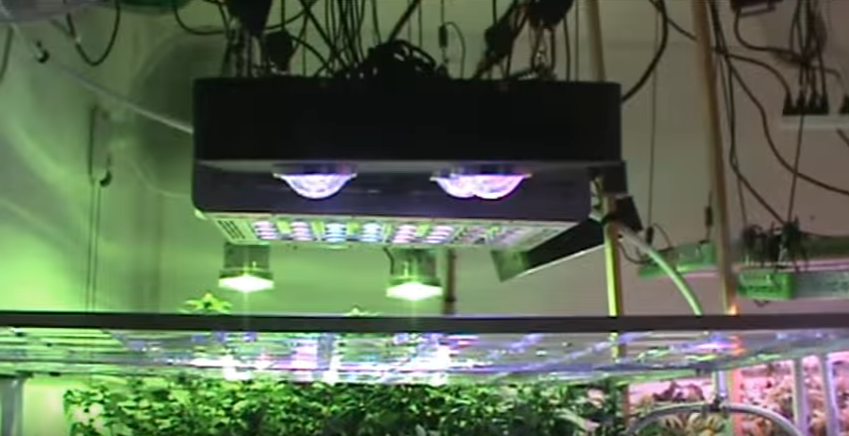
Colorado Finest Installs Double P SCROG 4x4

P SCROG Kits
or
SupportOurPlants@SCROGGER.com
- Gary Memelstein
- Tags: best how to scrog guides build a scrog colorado finest how to scrog indoor grow indoor growing low stress training P SCROG screens screen of green scrog scrog cannabis scrog kit scrog kits scrog marijuana scrog method scrog net scrog pot plants scrog screen scrog weed scrogging
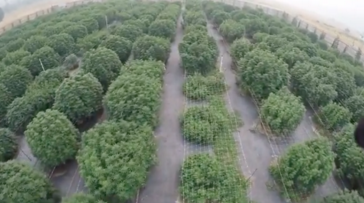
Okanogan Sunflower Farm

Like his great grandfather during the Gold Rush, Terry is in the midst of the "Green Rush" frenzy with his 28 acre Okanogan Sunflower Farm and "Okanogan Gold" cannabis brand of bud and extracts. "We can still pan for gold in the Okanogan River which is used for irrigation at the farm", says Terry. "We are located in north central Washington where the mountains meet the desert. This region and its micro climate are ideal for growing high grade cannabis plants."
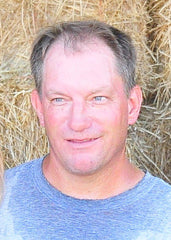
Hear Terry explain his cannabis operation in the YouTube video shot at the Okanogan Sunflower Farm, why he feels all plants should be ScrOGged and his predictions for the future of the cannabis industry. The drone footage is incredible. Please watch!

P SCROG Kits
or
SupportOurPlants@SCROGGER.com
- Gary Memelstein
- Tags: cannabis plant training growing cannabis how to scrog indoor grow indoor growing lollipopping low stress training lst outdoor grow screen of green scrog scrog kit scrog kits scrog marijuana scrog method scrog net scrog pot plants scrog screen scrog weed scrogging topping trellis trellis net
